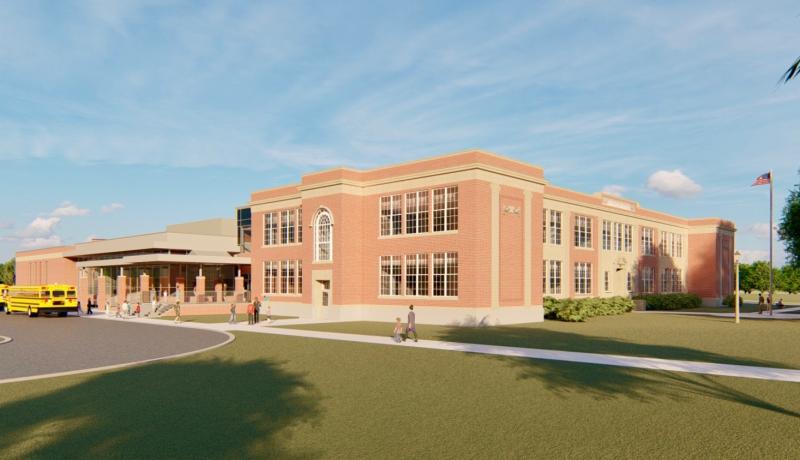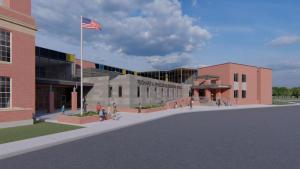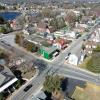Cape leaders say internet-based learning working for students
This time of coronavirus – with so much focus on remote learning via computer screens – has forced a radical shift in how local school districts are teaching their students. The question is, are students from kindergarten through 12th grade actually learning, and how do we know?
In a telephone conversation last week, Cape Henlopen School District administrators said expanding use of technology and widely available learning management systems such as Schoology are key to answering basic questions like these.
Cape Superintendent Bob Fulton said the district has been gravitating to greater use of technology and internet-based learning systems over the past several years. “Better than many districts, we’ve been keeping up with technology needs through the years. From kindergarten to high school, every student now has a district-supplied iPad. We have been a little ahead of the curve, and that positioned us really well when the virus hit. The state’s Department of Education has contacted us about this because we’re doing more in this regard than elsewhere in the state.”
Using the Schoology learning system for middle and high schoolers, and a system known as SeeSaw for elementary, teachers, students and parents communicate and learn on a familiar, Facebook-like platform on their computers. “The interface is very natural,” said Mike Young, supervisor of secondary education.
“Very intuitive. Secondary students are really adjusting. They are given assignments via the platforms, their progress on completing the assignments is tracked, tests give an indication of how well they’re absorbing course material, and students can access those assignments and communicate with teachers either through live instruction sessions, or offline at any time outside of normal school hours.”
In the world of contemporary education jargon, that’s called synchronous (everybody learning together) and asynchronous learning (students/teachers apart from one another). It’s also called blended learning. “COVID launched us deeper into blended learning technology,” said Amanda Archambault, supervisor of elementary education. “The younger kids pick this up quickly. They’re probably showing the adults at home how to use the programs.”
Young said the Schoology learning management system was used at first for certain specific purposes in the entire instruction spectrum. “Now it’s expanding and ingrained at lots of different levels. Pretty amazing. People understand it and communicate, and because of that we’re able to collect all kinds of data to help us understand how well students are learning. Expansion is now just what we do.”
Everything is at the students’ fingertips, he said, whether they’re at home, at school, off on a family trip, on medical leave or wherever. Learning does not have to stop.
“We’re much better at it now than last spring when corona forced us to get better,” said Fulton.
Monitoring, collecting data
Most elementary students in the Cape district are in traditional classrooms five days a week. At the middle and high school levels, some students are working strictly at home, while a majority has chosen the hybrid structure that has them in classrooms two days a week and learning remotely the other three days. They all, however, are using the same internet-based learning systems and are being constantly monitored for progress in their studies.
Teachers keep records of daily attendance, and they make sure their students are understanding the materials being taught, whether iin math, English language arts, science or other subjects. They have regular parent/teacher conferences.
“They’re watching what the kids are doing day to day,” said Young.
At the end of January, seventh- and eighth-graders will be taking statewide achievement tests called PSATs. “That should give a further indication of how well students are learning,” said Young. “I’m really optimistic. The students are doing well. I don't know that for sure, but that’s my sense. We have a much better structure now than we did last spring. We’ve adjusted. Some kids are thriving just remotely; others are loving the hybrid model.”
At the high school level, Young said, students are preparing for their Scholastic Assessment Tests (SATs) which will also give evidence of how well they’re learning. “We will be able to use that data to make adjustments next summer.”
The learning systems also come with videos and tutoring components that give students lots of different ways to learn and understand. “The curriculum companies are always responding to the changing needs of students and families, providing all kinds of extra materials,” said Archambault. “The platforms allow a great use of multiple people – including students, teachers and parents – to make sure it’s all working, whether remotely or in person.”
“The teachers and the learning systems complement each other,” said Young.
“We’re constantly adjusting our course, constantly expanding, constantly monitoring, to make sure kids are successful.”


























































